Getting familiar with Moodle
This week I gained a more in-depth understanding of the course by reading the information pages, instructions, and watching the videos posted on Moodle. Now I have a general sense of the expectations, requirements, the study plan, how marks are earned, additional tools and art supplies needed, the time required for each task, and the help and resources offered. I’ve gained an understanding of where to look for instructions, who to contact with what type of question, and how and where to submit lesson tasks and course assignments.
I have connected to LinkedIn and am looking forward to utilizing this platform for learning as well. I have also spent some time on the forum and familiarized myself with the different topics and types of groups listed.
WordPress blog
I learned how to create a WordPress blog and gained some experience with adding posts and customizing my page. I have also reviewed some of the blogs shared by others. This has helped me get to know my classmates a little.
Portrait
By completing this task, I was able to use some creativity and warm up for future assignments.
Moodle Map
Interpretation of the task: The task involved creating a “map” of Moodle, showcasing how I see and understand each element. The goal was to study the functions, understand and visualize the structure and use of Moodle, and present it in a creative and unique way.
Understanding the use of Moodle: Moodle is made up of different types of content elements such as assignment descriptions, reading materials, instructional videos, discussion forums, and much more. Each module utilizes a combination of these elements. One needs to complete a module (a week of assignments) in order to advance to the next. Marks are earned along the way based on the quality and accuracy of assignments completed.
Inspiration and design concept: Board games came to my mind as a suitable metaphor for this structure. Typically, in a board game, the players collect cards which allow them to progress from one field to the next. We can think of content elements as cards of the game and fields as tasks to complete within a module. The game piece can move forward on the board as tasks/missions are completed.
Execution of design: The drawing shows a board game called Moodle. The path represents the road to earning a graphic design degree. Each card’s design indicates which Moodle element it belongs to. Under each card stack, the cards would have action calls (read, complete, discuss, etc.) along with information listed about the expected number of hours needed as well as coins (marks) that can be earned. Players might also pull mystery cards which represent some of the possible challenges that might come up along the way.
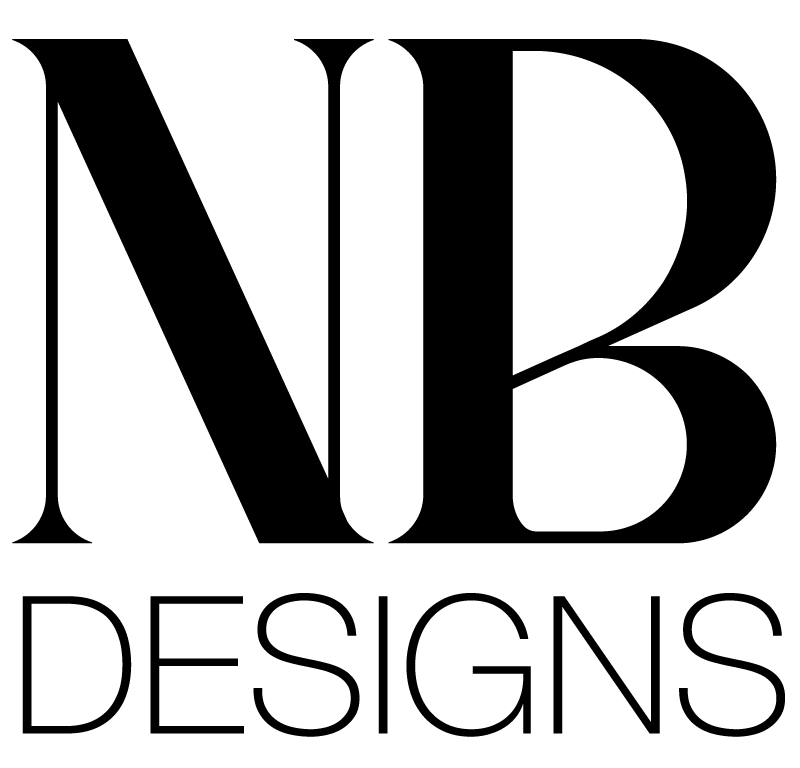
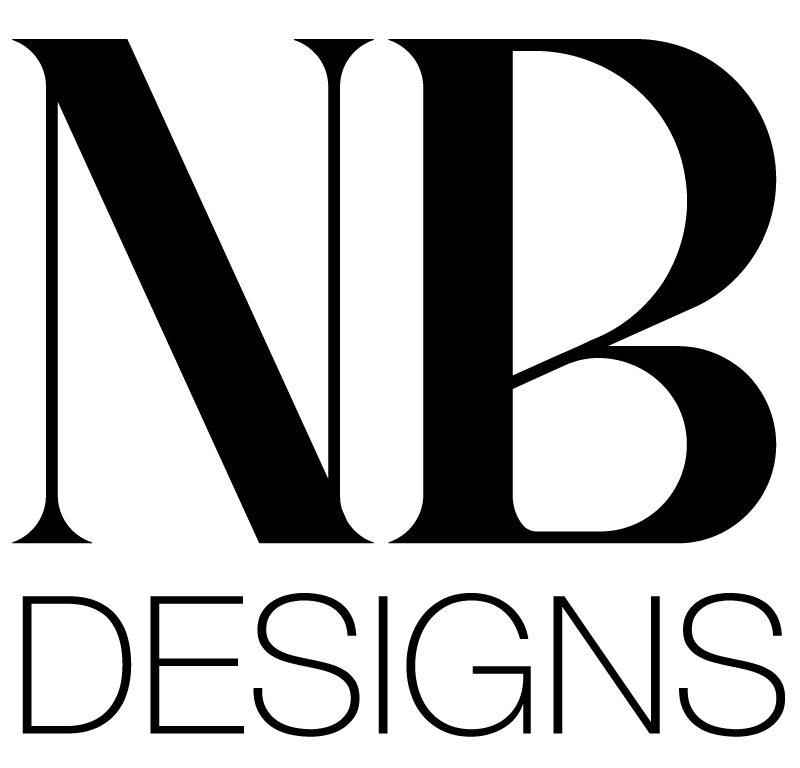
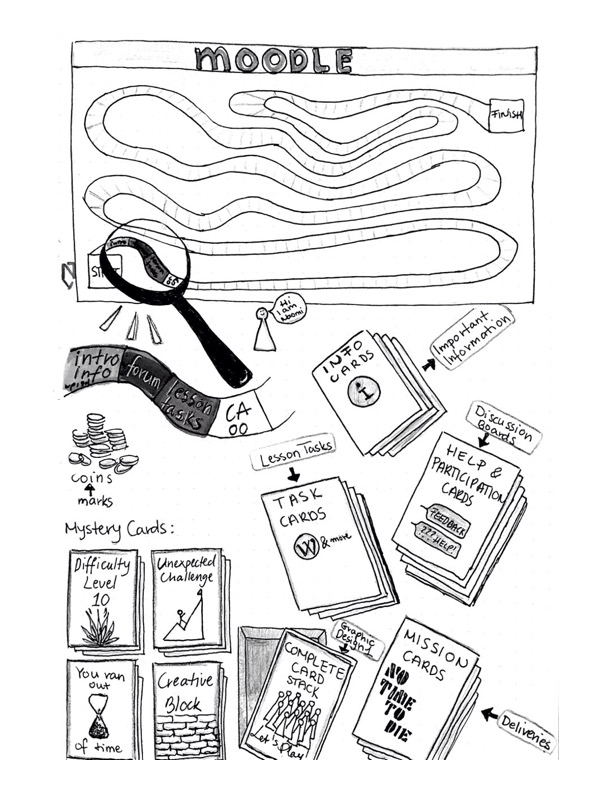
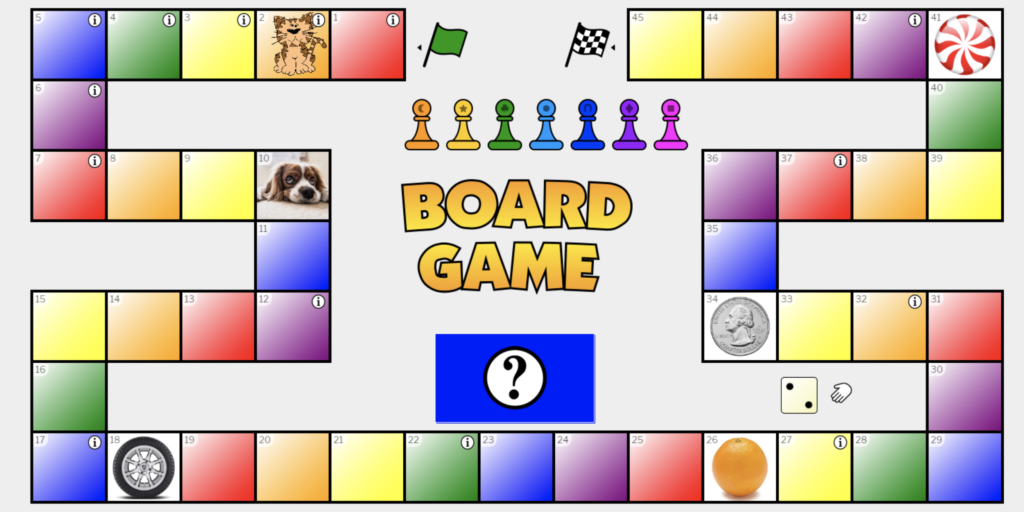

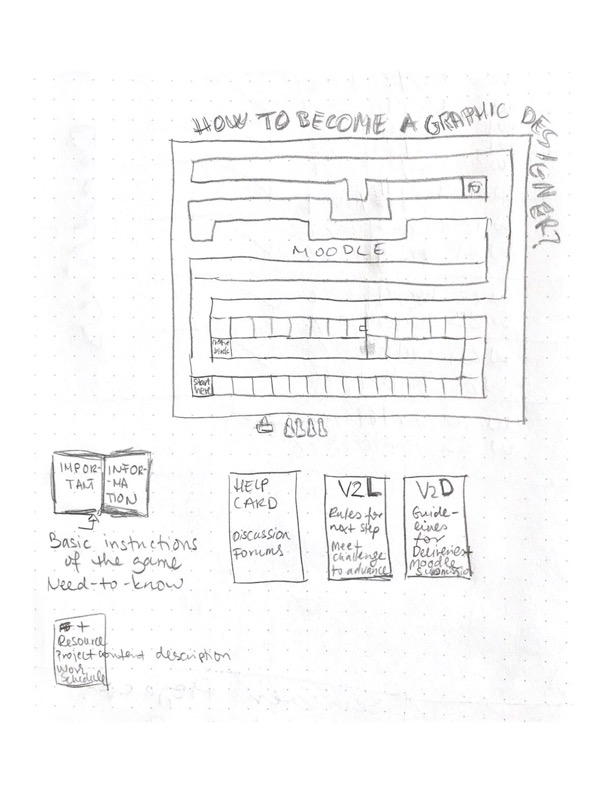
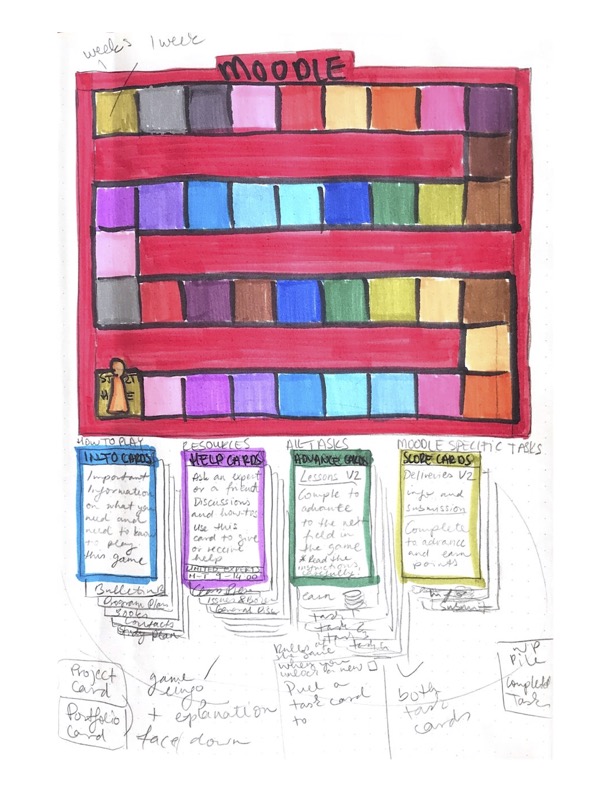

No responses yet